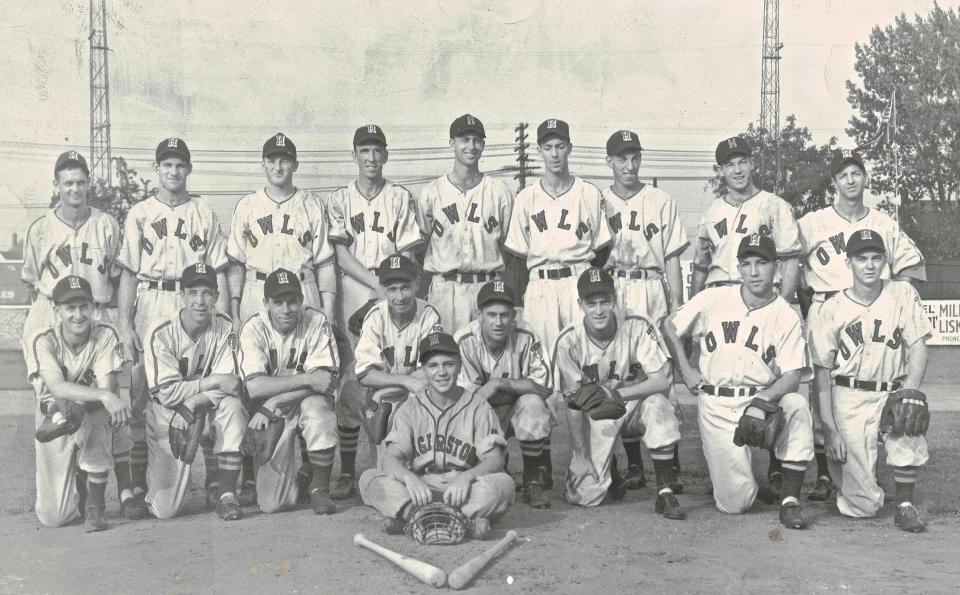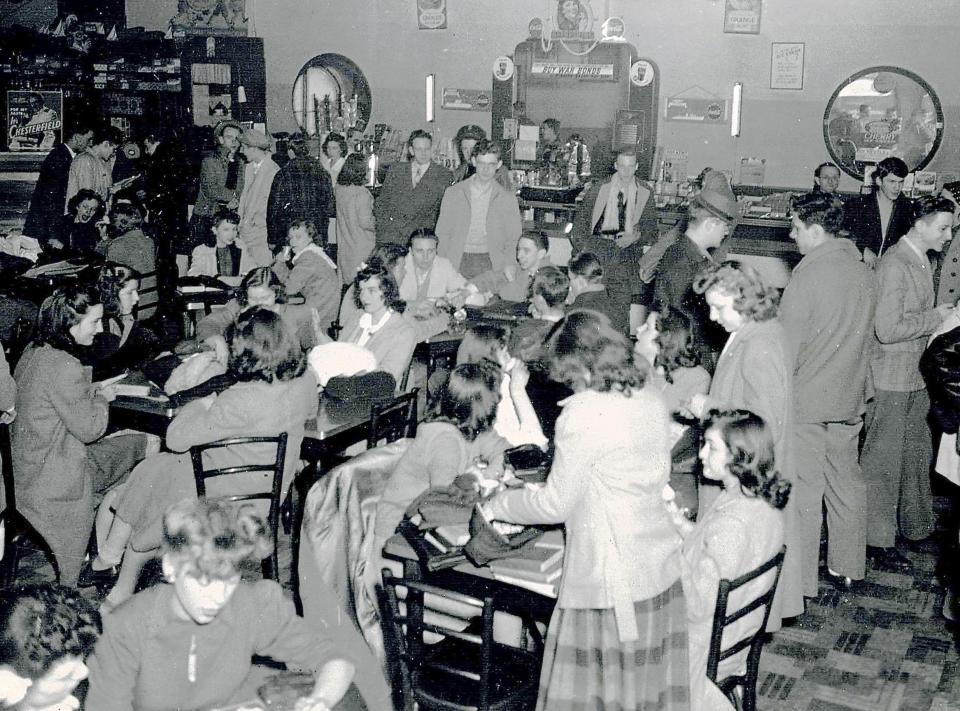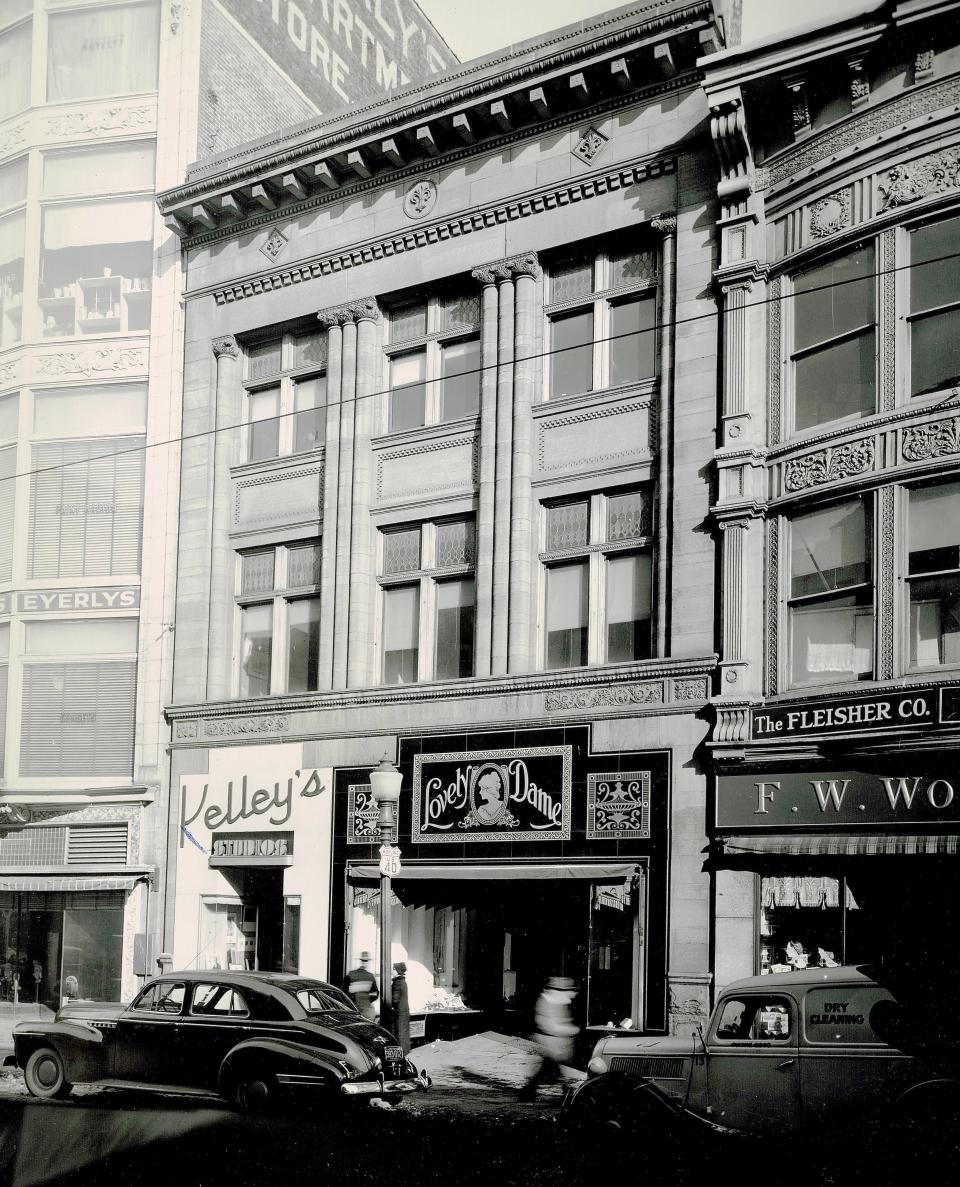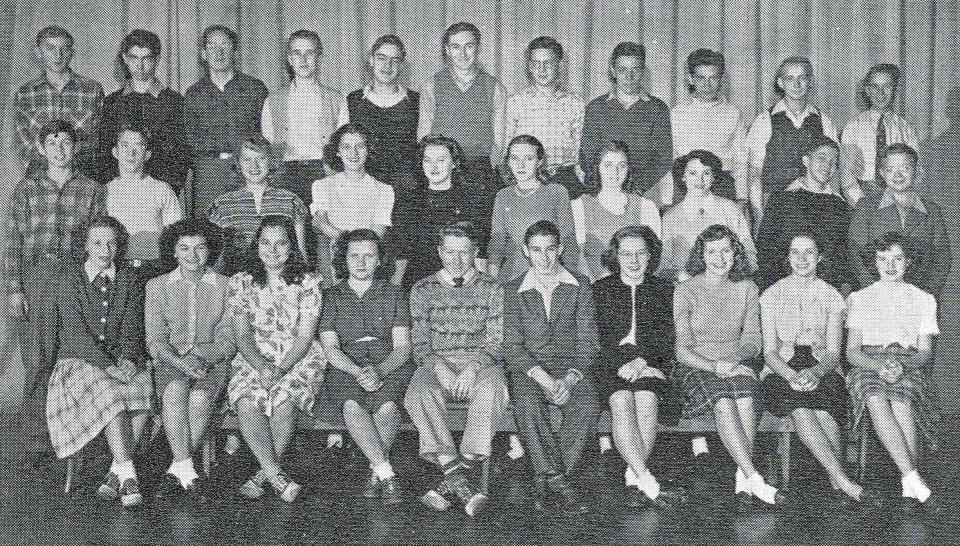Did you grow up in Hagerstown? What do you remember about the city?
“Hagerstown was the place where everything happened,” Ronald Miller told me in a recent interview.
Ronald — often called Ron or Ronnie — sat down to tell me about his childhood in Hagerstown during the 1930s and 40s. His memories capture how Hagerstown has changed and stayed the same, and the importance of sharing our stories.
He was born in the Washington County Hospital on June 22, 1931, to Charles Wesley Miller and Ethel Grace (Wolfkill) Miller. His father had also been born in Hagerstown, and his grandfather, Vernon D. Miller, owned Miller-Lisky Electric Company.
In his early childhood, Ron’s family lived on South Locust Street. By 1941, Ron’s father operated Miller’s ESSO at the corner of Frederick and Baltimore streets, close to home. Ron’s grandparents also lived nearby.
“I’d just run down the alley from our house into their backyard on Baltimore Street,” he remembered.
Ron attended Antietam Street Elementary, South Potomac Junior High and Hagerstown High School, graduating in the Class of 1949. School instilled in him a love for sports and brought lifelong friendships.
Baseball, especially, brought Ron and his friends together. “We formed a softball team from the neighborhood boys," he said. "We played against any team that would play us.”

The Hagerstown Owls, a minor league team, played its first season in 1941 as part of the Inter-State League. Ron and his friends woke up early on Saturday mornings to watch the Owls train and get their autographs. During games at Municipal Stadium, the boys collected foul balls that flew over the fence to use in their own games.
During the Owls’ first season, local businesses offered rewards for Owls who hit home runs. Ron’s father offered six gallons of Miller’s ESSO gasoline to the first Owl who hit a home run, while Beck’s Restaurant offered meal tickets and department stores offered shaving kits.
Ron had been 10 years old during the bombing of Pearl Harbor, and as 1942 progressed, the war effort intensified.
“We had food stamps and gasoline stamps. Everything was rationed,” he recalled. “At one time, there were almost 10,000 workers at Fairchild for the war effort.”
Gasoline rations affected his father’s business. Ron, who worked at the station by age 14, remembers only selling 35 gallons of gas for an entire afternoon.

When World War II ended, Ron and his fellow classmates were entering their teenage years. The original YMCA at the corner of North Potomac and West Church streets “was the place I used more than anything else,” he said. “We played basketball club games and shot pool there.”
The YMCA offered dances on Saturdays for junior high and high school students. After basketball games, Ron headed to the dances, where disc jockeys “played all the tunes of the time.” Billboard magazine’s top popular songs for 1949 included Vaughn Monroe’s “(Ghost) Riders in the Sky,” Frankie Laine’s “That Lucky Old Sun” and Vic Damone’s “You’re Breaking My Heart.”
“Did you ever go to the Valencia?” I asked, having seen photographs of the popular after-school hangout in the Washington County Historical Society archives.
"Everybody went to the Val,” Ron replied. The Spanish mission-style building at 1201 Potomac Ave., built by Dr. Herbert Kneisley in 1926, still stands.
Ronald also enjoyed eating ice cream and treats from Geiger’s Pharmacy at 47 S. Potomac St., which opened in 1922, and the Lovely Dame, which was open at 14 W. Washington St. by 1929.

Downtown Hagerstown offered everything he needed, including entertainment.
“We had four theaters — Henry’s, the Academy, the Colonial and the Maryland Theatre,” he said. And while Ron did not shop much, he named the stores that everyone frequented: Leiter’s, Eyerly’s, McCrory’s and Newberry’s.
His family did not travel often, but after he earned his driver’s license, Ron took his grandparents on weekly Sunday drives to places such as Cowans Gap in Fort Loudon, Pa. He purchased his first car, a 1938 two-door Packard, for $200 from his uncle, who drove it to Hagerstown from California.
I told Ronnie I had seen his sophomore class photo and Camera Club photo in the 1947 Heiskellite yearbook. “Camera club was not that interesting,” he replied, grinning, although he soon shared a particular photo moment that was.
In early June 1947, a small tornado hit Hagerstown, causing destruction to buildings and power lines. During the tornado, Ron sheltered in the basement showroom of Leiter Brothers at 34 W. Washington St. He biked home for his camera afterward, returning to photograph the destruction around town. A friend had helped him pick out the perfect camera and showed him how to use it — a skill that followed him through life.
After graduation, Ron went to Johns Hopkins University to study civil engineering; he played football, joined a fraternity and made lifelong friends. Ronald married and returned to Hagerstown, working as an industrial engineer at Fairchild, a project engineer at Jamison Cold Storage, and at the Western Maryland Consortium.
A member of the Hagerstown Elks Lodge #378, he progressed through the chairs to become Exalted Ruler (1960-1961), as well as President of the Tri-State Elks Association. He moved to Chambersburg after his second marriage, where he lives today.
I was excited to interview Ron, now age 92, because he is my grandfather. Before working at the historical society, I always associated Hagerstown with him. When the curator position opened in July 2022, I called him and said, “There’s a curator job in Hagerstown!” He quickly encouraged me to apply.

Now, after working at the WCHS for nearly 15 months, I am delighted each time I see his name in a Hagerstown Directory or his photograph in a Heiskelite yearbook.
I have a deeper appreciation for Hagerstown, as well as my grandfather’s experiences, since working at the WCHS. Interviewing my grandfather about his childhood in Hagerstown has deepened this appreciation and reinforced my goal of preserving Washington County’s history.
Did you grow up in Hagerstown? If so, what are some of your memories? How has it changed and what remains the same?
Abigail Koontz is curator and programs manager for the Washington County Historical Society.
More local history: Hagerstonians gathered at the Baldwin for a séance in 1899. Would the spirits move them?
This article originally appeared on The Herald-Mail: At 92, Ronald Miller recalls the Hagerstown of his youth

